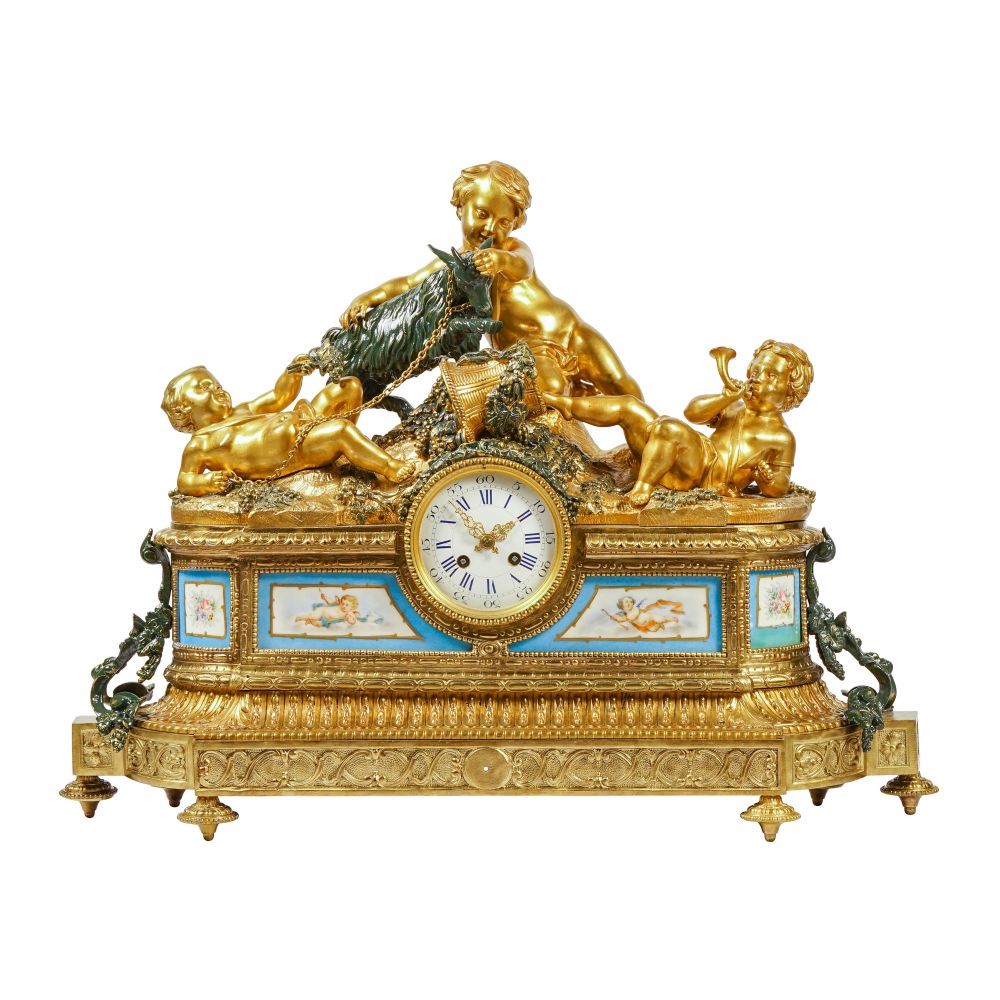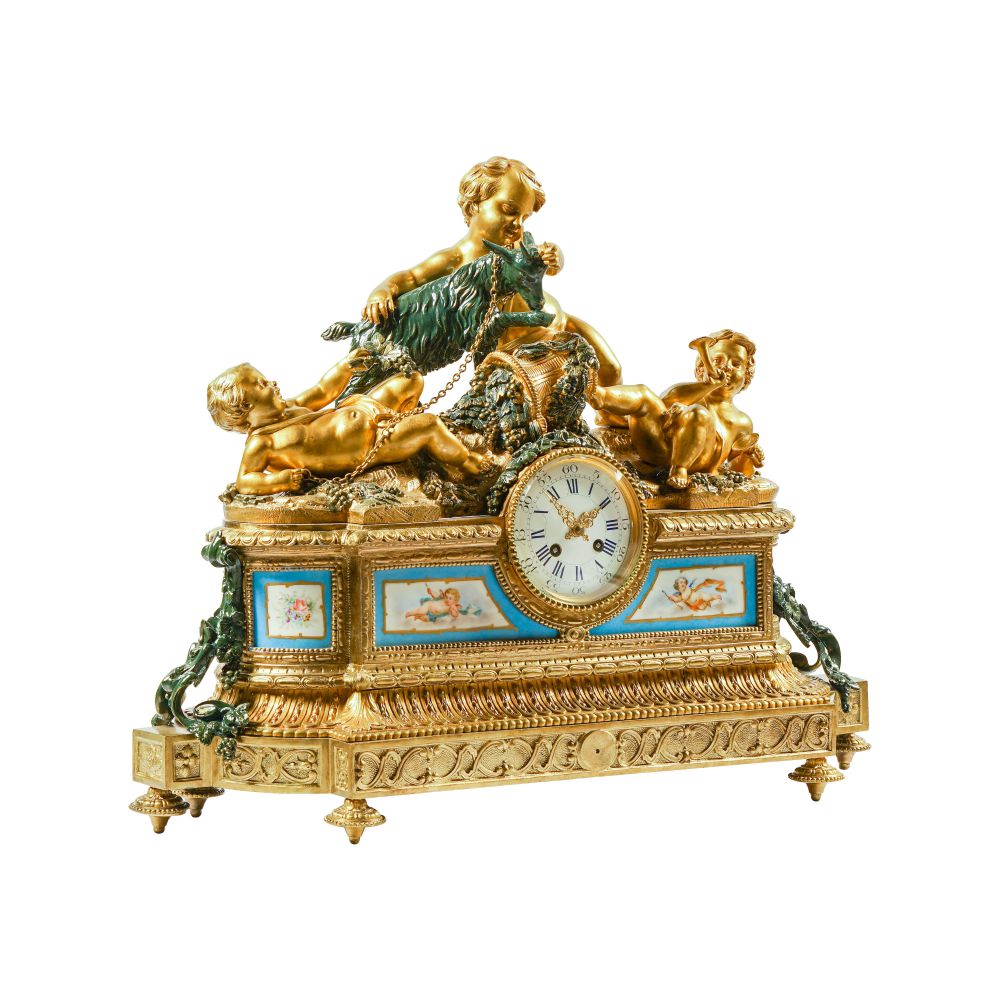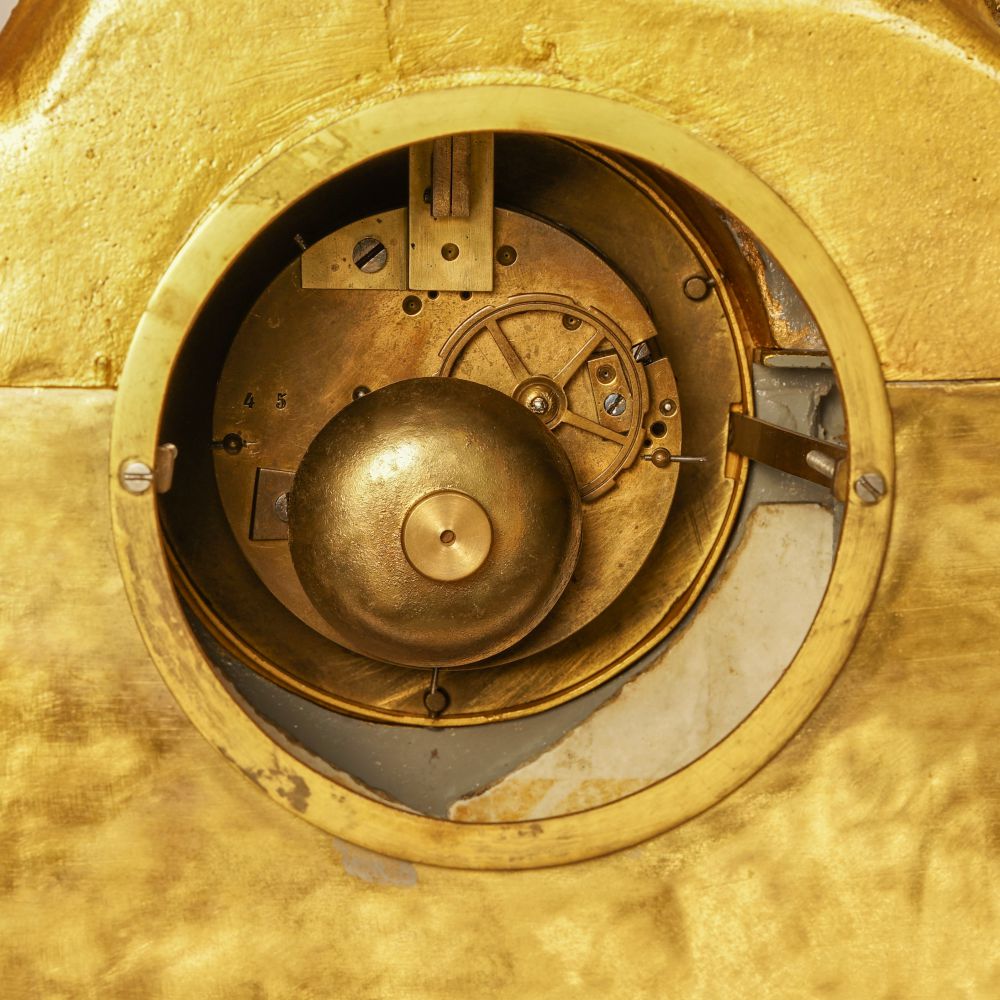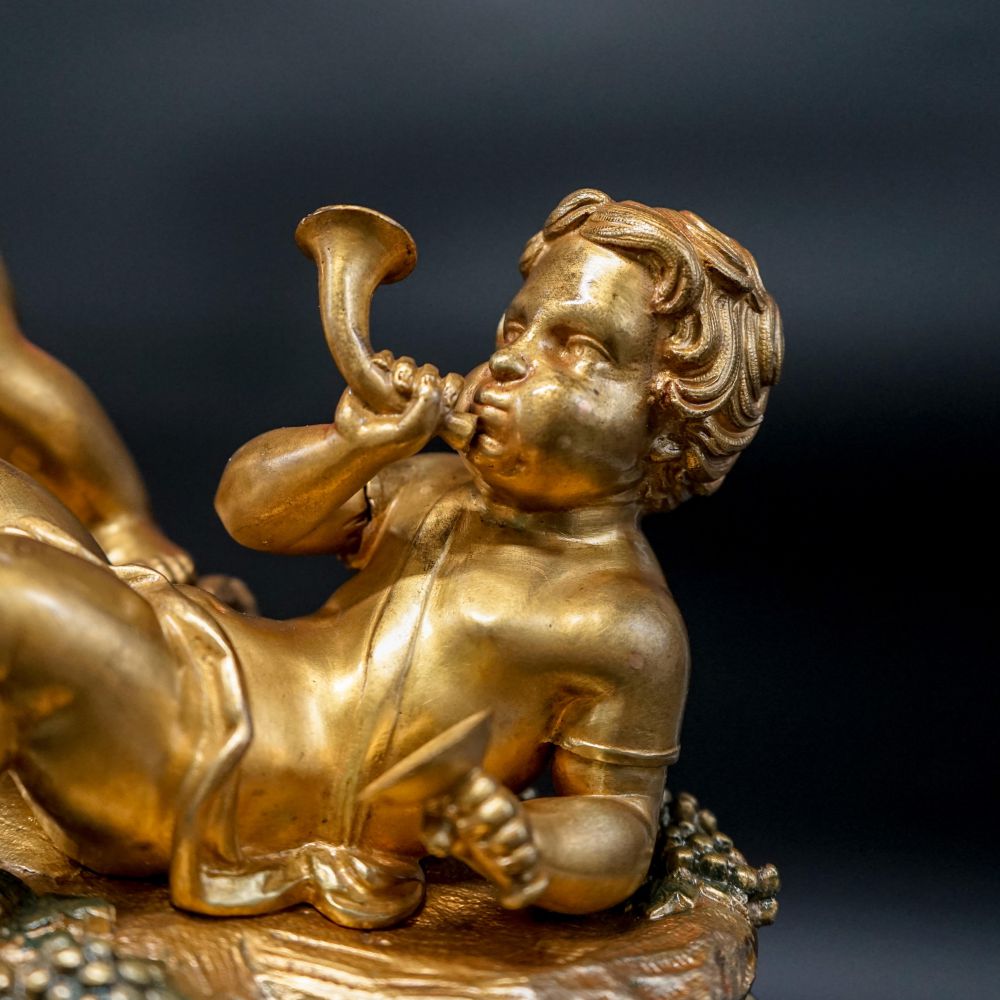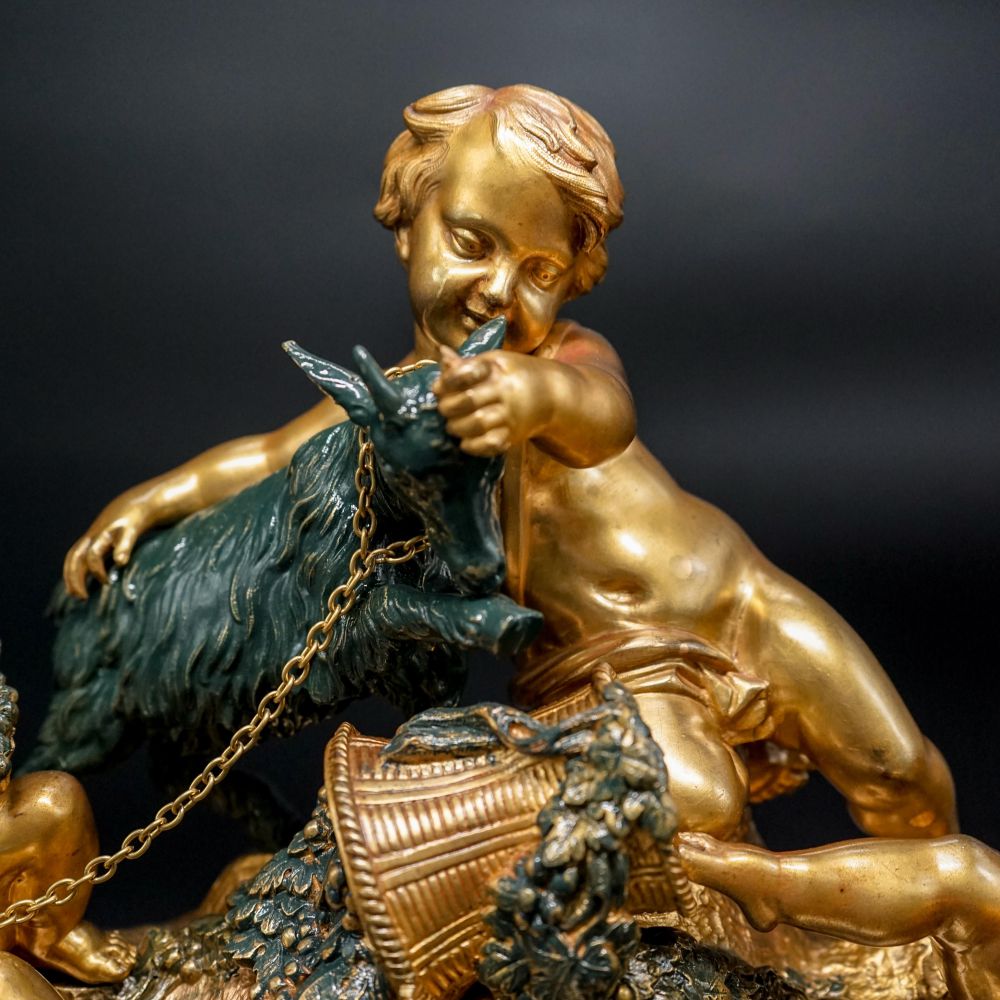19th Century French Ormolu Mantel Clock
Inventory Number: C1902009
Made circa 19th century in France, signed L.E.P JAPY & Cie on the movement, 65x50x20 cm.
Ormolu (gilt bronze) case, two little putti leading the goat and another one blowing the horn, all of them are surrounded by abundant grapes, such kind of neo-classical style scene often represents prosperity.
White porcelain dial with Roman numerals and Arabic indexes set within the beaded ormolu bezels.
A shaped base with fully decorated acanthus leaves and neat geometric patterns, inset with four porcelain panels with putti and flowers within turquoise and gilt borders.
A typical circular 8-day double-train movement with anchor escapement.
Functions: hours, minutes, hour and half-hour striking.
Putto / Putti
A putto (plural: putti) is a cherub or cupid frequently appearing in both mythological and religious paintings and sculpture, especially between Renaissance and Baroque periods, and later used as a decorative element in the design of furniture, ceramics, statuary, and clocks, etc.
They are usually depicted as chubby males, or of indeterminate gender, with wings or sometimes not. Their depiction may represent an association with love, heaven, peace, or prosperity.
Ormolu
Ormolu was popular with French craftsmen in the 18th and 19th centuries for ornamental fittings for furniture, clocks, and other decorative items. True ormolu is gilt bronze, which is bronze that has been coated with gold using a mercury amalgam. Due to the health risks associated with using mercury, this method of creating ormolu was discontinued from time by time. It was often lacquered to prevent it from tarnishing.

